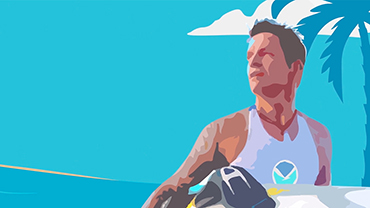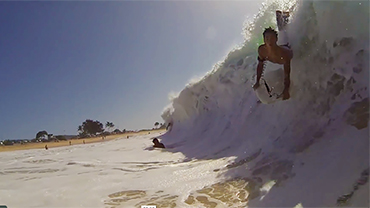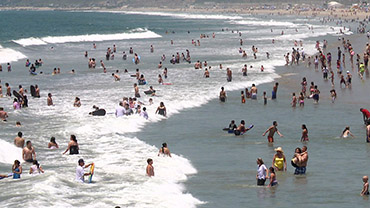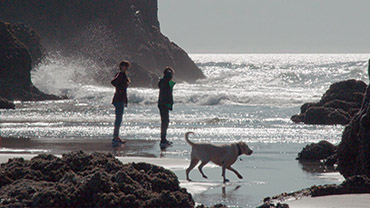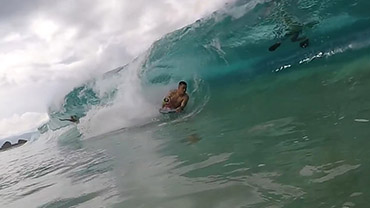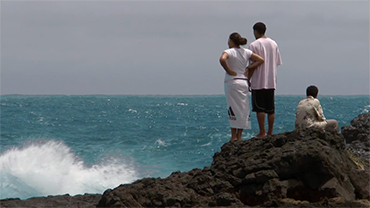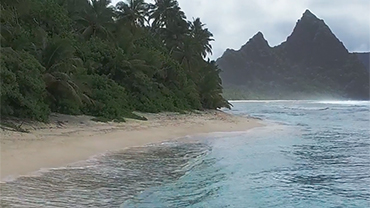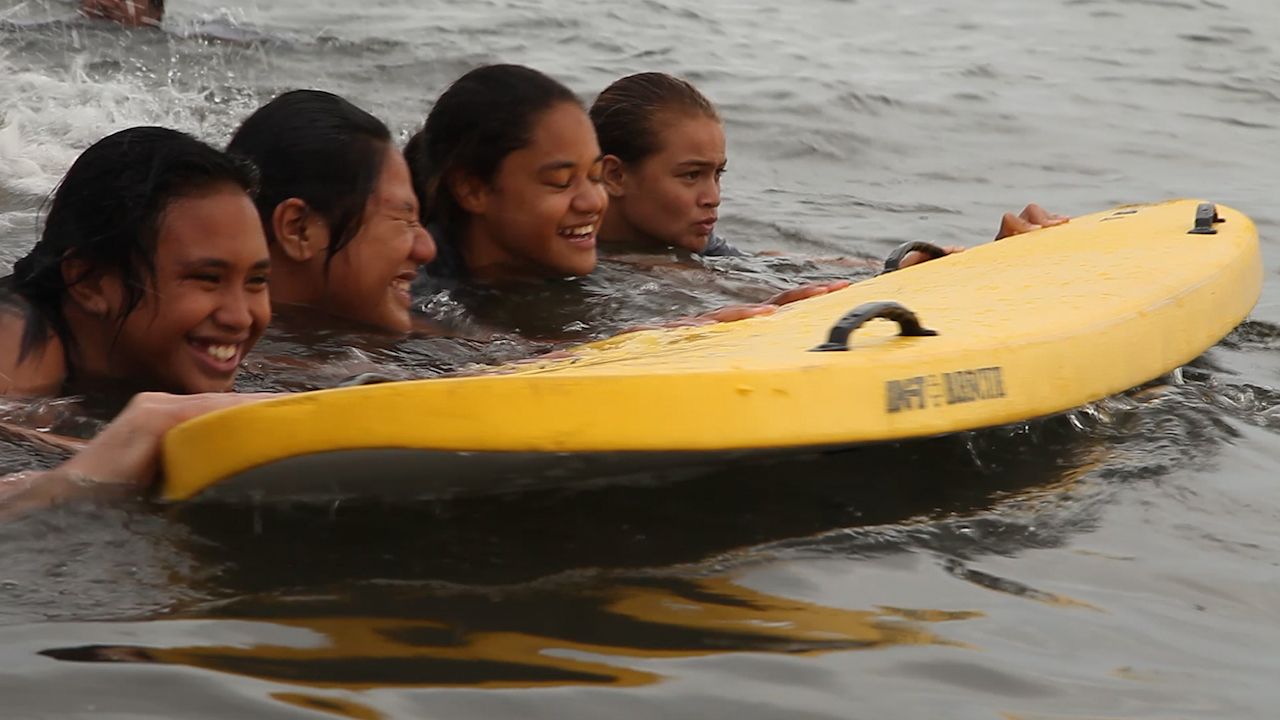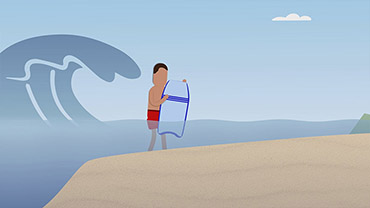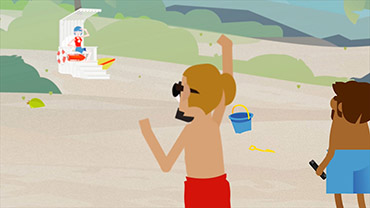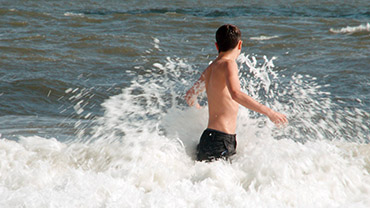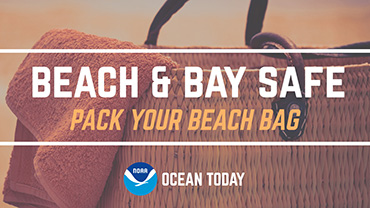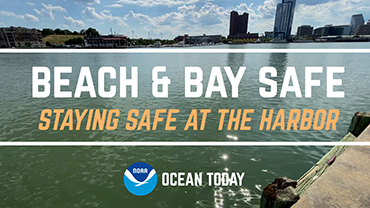Transcript
Everyone is captivated by the beauty of the remote islands of American Samoa and the rich Samoan heritage as ocean voyagers and protectors.
To protect yourself and others on these stunning but dangerous coastlines, you must always respect the ocean, Fa’aaloalo i le sami.
And be careful whenever you are in or near the water, Fa’aeteete i le sami.
Throughout these islands you’ll see steep and jagged cliffs, sharp rocks, unguarded beaches and pounding surf. Hidden at or below the surface are ava, with currents that can pull you out to sea and sharp reefs that can cause severe injuries.
The remoteness of these South Pacific islands means that everyone must serve as a protector for themselves, their family and the village.
In American Samoa there are no professional ocean lifeguards, so you need to think like a lifeguard; always watch the water and those around you. If something does happen, be calm before you act to save the lives of others and perhaps your own.
Stay safe and respect Samoan tradition by never swimming off an undesignated beach without checking with a village leader.
Deadly situations can develop when people go in the water alone or end up in the water without intending to be there.
Waves can easily knock someone off a cliff and over a reef, leaving them trapped against rocks with pounding surf. Currents can then rapidly pull anyone further into dangerous situations.
A first step to being safer near or in the water is knowing how to swim and more importantly how to stay calm if you end up in the water when you may not mean to.
The most important skill is being able to float on your back while staying calm. This simple ability may allow you to self rescue or give others time to reach you.
A unique hazard to islands with reef and rock coastlines are ava, where tidal water rushes from the beach toward the ocean through narrow gaps in the coral reefs. These currents can be far stronger than any swimmer and pull them far out to sea.
Once pulled out past the jagged reefs, the first thing to do is stay calm. At the same time, stay afloat and signal to others on shore.
When you see someone else in trouble, and before you act, practice what we call Take Ten or Faatali. Pause for ten seconds, to assess the situation and plan the safest way to protect yourself and help the victim.
You can do the most good by staying calm. Never rush into the water unless you’re a professional ocean lifeguard with the proper equipment and support.
Often when a second person enters the water to help they can become the tragic victim. Please don’t ever enter the water until additional help arrives.
Signal to others by waving your hands and call 911 if you have a phone. If you have a whistle the standard lifeguard warning for an emergency is repeating three short, loud blasts.
That means come running, come help.
Keep an eye on the victim, and look for a rope or floatation device. The rule for helping others is to reach or throw and don’t go. A rope may help you pull them to safety. Tossing them a float may keep you and the victim safe.
If you can’t pull them to shore, help them stay calm by maintaining eye contact and talking until professional help can get them.
The best way to stay safe? Don’t end up in dangerous situations. Keep your eyes on the water and stay aware of changing conditions like, weather, tides and currents that can make any wave more dangerous.
Dangerous waves and ocean conditions threaten lives every day in these tropical islands. Respecting the ocean and protecting others is the Samoan way and it’s a practice we should all follow.
Even in paradise, remember Fa’aaloalo i le sami and Fa’aeteete i le sami. And if you see a dangerous situation Faatali before you act because you must first protect yourself in order to save others.
Fa’aaloalo i le Vasa, Fa’atete i le Vasa, Faatali!
Transcripción
Todos quedan cautivados por la belleza de las islas remotas de la Samoa Americana y la rica herencia samoana de navegantes y protectores del océano.
Para poder protegerse a usted y a otros en estas impresionantes pero peligrosas costas, siempre debe respetar al océano, Fa’aaloalo i le sami.
Y tenga cuidado siempre que esté en o cerca del agua, Fa’aeteete i le sami.
A lo largo de estas islas, ha de ver acantilados escarpados y dentados, rocas afiladas, playas sin vigilancia y oleaje fuerte. Escondidos en o debajo de la superficie hay ava, con corrientes que pueden arrastrarle hacia el mar y arrecifes afilados que pueden causarle lesiones graves.
La lejanía de estas islas del Pacífico Sur significa que todos deben servir como protectores para sí mismos, su familia y la aldea.
En la Samoa Americana no hay salvavidas oceánicos profesionales, por lo que cada persona debe pensar como un salvavidas; siempre mire el agua y a los que le rodean. Si algo sucede, mantenga la calma antes de actuar para poder salvar la vida de los demás y quizás la suya.
Manténgase seguro y respete la tradición de Samoa, nunca nade en una playa no designada sin consultar primero con un líder de la aldea.
Pueden desarrollarse situaciones mortales cuando las personas se sumergen solas en el agua o terminan en el agua sin tener la intención de estar allí.
Las olas pueden fácilmente derribar a una persona de un acantilado o arrecife de coral, dejándola atrapada contra las rocas en el oleaje. Las corrientes pueden empujar rápidamente a cualquier persona hacia situaciones peligrosas.
Un primer paso para estar más seguro en o cerca del agua es saber nadar, y más importante aún, es saber cómo mantener la calma si termina en el agua aún sin la intención de estar ahí.
La habilidad más importante es poder flotar boca arriba mientras mantiene la calma. Esta simple habilidad puede permitirle rescatarse a sí mismo o dar tiempo a otros para que lo alcancen.
Un peligro único de las islas con costas rocosas y de arrecifes son los ava, donde el agua de la marea se precipita desde la playa hacia el océano a través de espacios estrechos en los arrecifes de coral. Estas corrientes pueden ser mucho más fuertes que cualquier nadador y arrastrarlos mar adentro.
Si es arrastrado hacia pasados los arrecifes irregulares, lo primero que debe hacer es mantener la calma. Al mismo tiempo, manténgase a flote y haga señales o gestos a los demás en la costa.
Cuando vea a alguien en apuros, y antes de que actúe, mantenga la calma y practique lo que llamamos en inglés "take ten" o Faatali. Haga una pausa de diez segundos para evaluar la situación y planificar la forma más segura de protegerse a usted y poder ayudar a la víctima.
El mayor bien lo puede hacer mediante mantener la calma. Nunca se lance al agua a menos que sea un salvavidas oceánico profesional con el equipo y el apoyo adecuado.
A menudo, cuando una segunda persona entra al agua para ayudar, puede convertirse en una víctima trágica. Por favor, nunca entre al agua hasta que llegue ayuda adicional.
Señale o realice gestos a los demás agitando las manos y llame al 9-1-1 si tiene un teléfono. Si tiene un silbato, la advertencia estándar de un salvavidas para una emergencia es repetir tres pitidos cortos y fuertes.
Esto significa venga corriendo, venga a ayudar.
Vigile a la víctima y busque una cuerda o un dispositivo de flotación. La regla para ayudar a los demás es alcanzar o tirar y no ir. Una cuerda puede ayudarlo a llevar a las personas en apuros a un lugar seguro. Lanzarles un flotador puede mantenerlos a usted y a la víctima a salvo.
Si no puede llevarlos a la orilla, ayúdelos a mantener la calma manteniendo el contacto visual y hablando hasta que la ayuda profesional pueda alcanzarlos.
¿Cuál es la mejor manera de mantenerse a salvo? No termine en situaciones peligrosas. Mantenga sus ojos en el agua y manténgase al tanto de las condiciones cambiantes en el tiempo, las mareas y las corrientes que pueden hacer que cualquier ola sea más peligrosa.
Las peligrosas olas y las condiciones del océano amenazan vidas todos los días en estas islas tropicales. El respetar el océano y proteger a los demás es el estilo de Samoa y es una práctica que todos deberíamos seguir.
Incluso en el paraíso, recuerde Fa'aaloalo i le sami y Fa'aeteete i le sami. Y si ve una situación peligrosa, Faatali antes de actuar porque primero debe protegerse a usted para poder salvar a los demás.
Fa’aaloalo i le Vasa, Fa’atete i le Vasa, Faatali!
Fa’aaloalo i le Vasa, Fa’atete i le Vasa, Faatali!
 An official website of the United States government.
Here's how you know we're official.
An official website of the United States government.
Here's how you know we're official.

